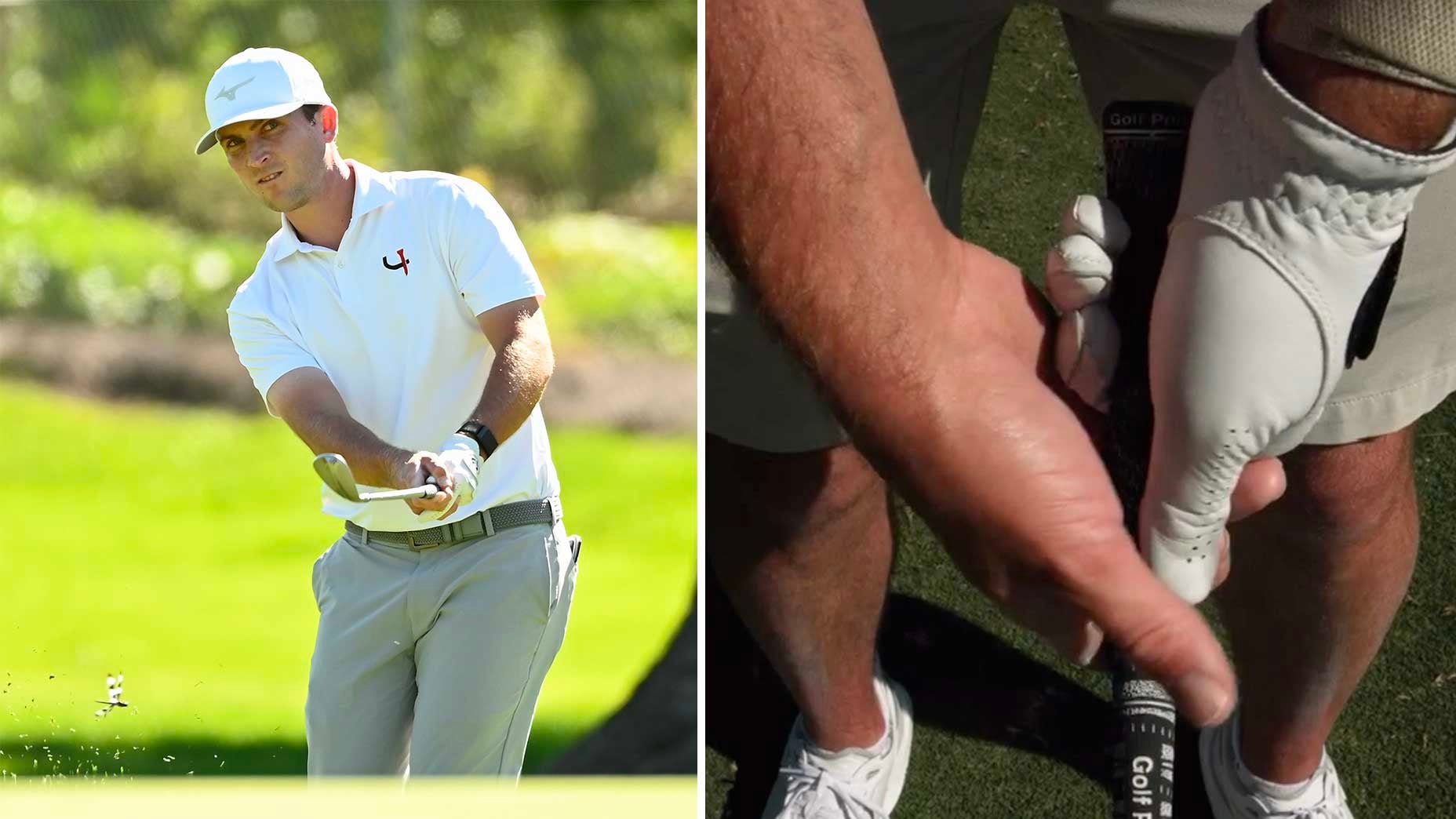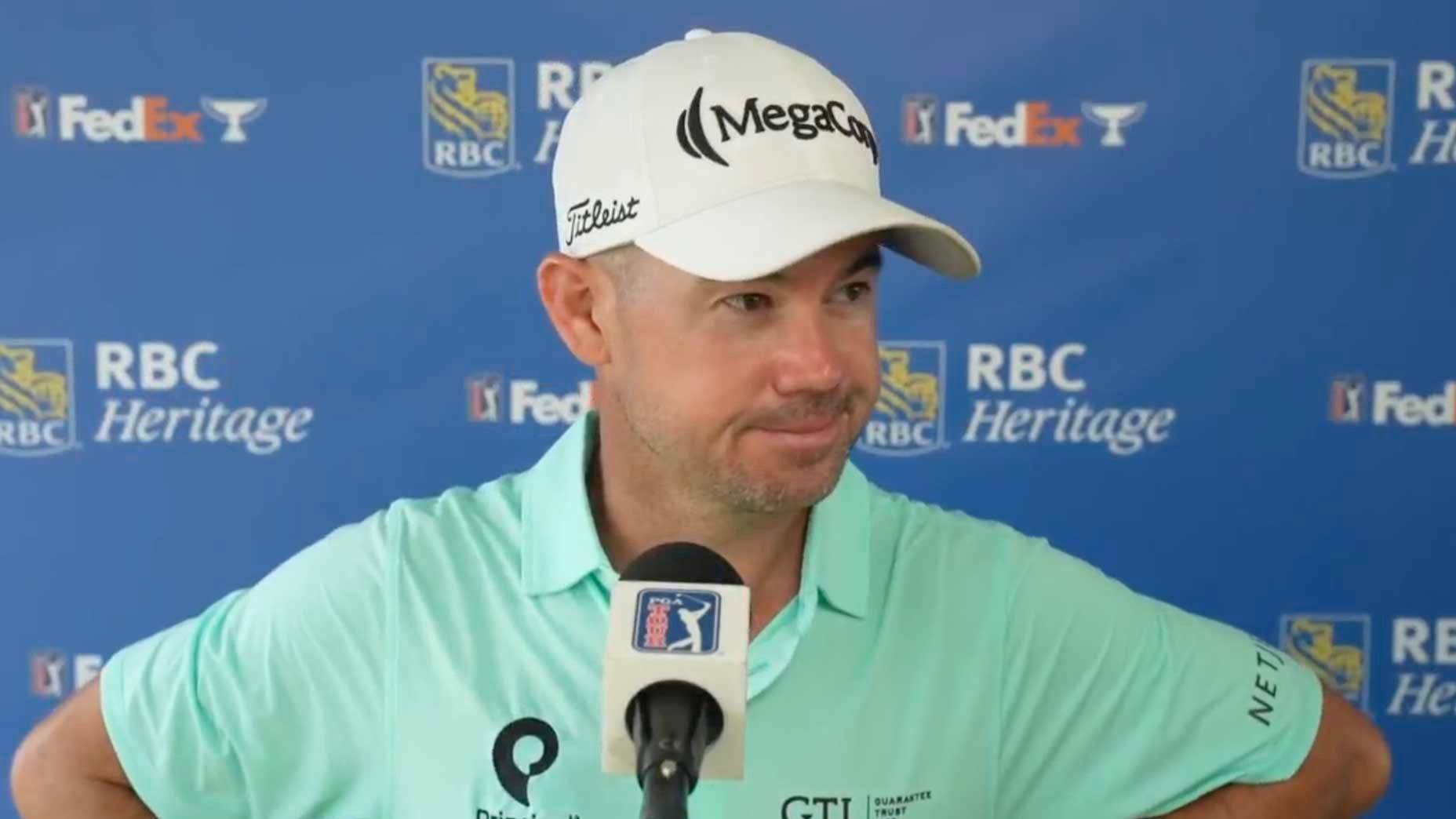 Brian Harman’s spicy 45-second interview delivers hidden lesson
Brian Harman’s spicy 45-second interview delivers hidden lesson
On this epic Ireland golf trip, the courses are just as intoxicating as the whiskey
Downtown Dublin is populated by two kinds of people early on Sunday mornings: those heading out and those finally heading home. It’s an observation put to me by my local driver, Jimmy. And it’s a good one. Dubliners walk in front of our plush Mercedes van to cross the streets as we exit the pub-laden Temple Bar district, just after 7:00 a.m. Half are sharply dressed. Well rested. They walk with purpose. The other half traipse the streets with lead feet as last night’s inebriation wears off.
Within moments, Jimmy and I are out of the city and cruising through the Irish countryside. We’re heading south to a popular golf course called The European Club. It’s a beautiful Sunday morning in Ireland; the sun is pouring over impossibly lush, green fields that we’re zooming past. It’s my turn to make an observation, and the outside pastures are easy fodder. Jimmy leaps at the chance to fill our 75-minute drive to County Wicklow. “Oh, yes … this is a gorgeous area,” he responds in a wonderfully thick Irish accent. “In fact, you’ve probably seen it before.” Strange. I’d been to Dublin only once prior, and I didn’t leave the city limits. “About 20 minutes from here is where Spielberg filmed the D-Day landing scenes from Saving Private Ryan, on Ballinesker beach, near Curracloe,” he adds.
Impressive. If Saving Private Ryan is not the greatest war film ever made, it at least owns cinema’s greatest battle scene. The opening 20 minutes are so realistic that military historian and D-Day veteran Stephen E. Ambrose — whose memoirs Spielberg drew historical inspiration from — stopped the screening upon first watch. The flashbacks were too intense. “And it’s not the only Hollywood film we’ve had shot in this part of Ireland,” Jimmy continues. “Braveheart was filmed in the hills of Wicklow, which aren’t far from the European Club.”
At this point, it’s refreshing to hear about something other than Game of Thrones. I’ve just arrived in the Republic after five days in Northern Ireland, where large parts of the wildly popular HBO series were filmed along the Causeway Coast. It’s a gorgeous and ancient stretch of rocky coastline. Coincidentally, it’s also 15 minutes from Royal Portrush. I’ve nothing against Game of Thrones, but I’ve never watched an episode. And, well, I’m here for business.
And this week, business is good. The kind folks at the tourism bureaus of Northern Ireland and Ireland have lined up a mouthwatering five golf courses to play over six days. Four of which are ranked in the Top 100 Courses in the World. In Northern Ireland, there’s Royal County Down, Ardglass and Royal Portrush. In Ireland, Portmarnock and the European Club are last on this dream spread.
Last, but not least. The European Club is a ruggedly handsome links located 40 miles south of Dublin. Here, wooden sleepers line the faces of every memorable, merciless bunker. The ocean views on the back nine are mesmerizing. But the European Club is celebrated more for its owner and designer, Pat Ruddy. He is one of golf ’s great characters. Ruddy’s signature design is Ballyliffin GC in County Donegal. But the European Club is his love child. He adored the land so much he built 20 holes: There’s 7a and 12a. The reason? “I’m a glutton for golf,” Ruddy explains over lunch, after his course took my golf balls and self-esteem. “As a child, learning the game from my father, I’d cry my eyes out all the way up the 18th. I never wanted our rounds to end.”
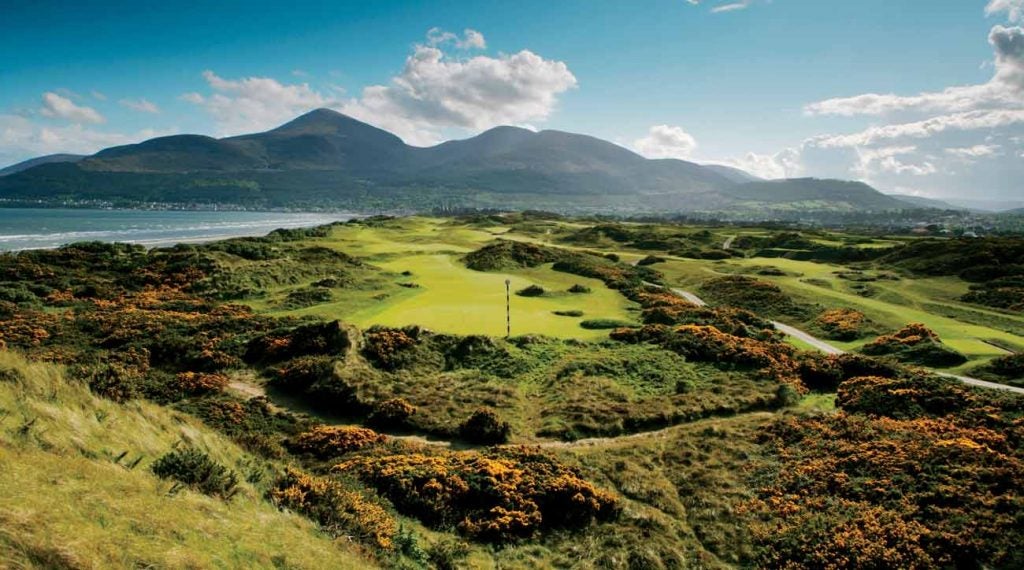
Golf writers adore Ruddy because he is one. He’s authored a variety of books and treats any visiting scribe like family. Ruddy was raised in County Sligo, in the northwest of Ireland. Sligo is famous for producing the acclaimed poet William Butler Yeats. But Ruddy is just as lyrical. He’s a born storyteller. Five hip replacements have only sharpened this 74-year-old’s wit. “Tom Watson has only had two hip replacements,” he quips, while walking me through his office on crutches.
Ruddy’s dream of building a golf course was born in 1958, when he heard that Jimmy Demaret and Jack Burke Jr. had opened the Champions Golf Club in Houston. “Finally, I make my move in the ’80s,” Ruddy recalls. “But by then, the butcher, the baker, the candlestick maker and the undertaker start building them. Everyone’s building a golf course!” Ruddy is the Muhammad Ali of Irish course design. He’s a wonderful self-promoter. I’m in awe as I look around his library, which is filled with hundreds of golf books collected over a lifetime. But one book stands out. It’s called The Golf Girl and it was written and illustrated by Maud Humphrey, the mother of Humphrey Bogart.
We continue eating lunch and I ask Ruddy if he’s going to have a beer with me. But he says he’s never finished an alcoholic beverage in his life. Never. I nearly choked on my sandwich. An Irish golfer who doesn’t drink? You meet them as often as you meet leprechauns. “I’ve taken a sip of most drinks … but I found them repulsive,” he explains.
I did not find them repulsive. In fact, I’d consumed a generous amount during the previous six days. It started when eight golf writers arrived in Newcastle, Northern Ireland, on a rain-soaked Monday for a boondoggle. On Tuesday, we were to play Royal County Down — a timeless old Tom Morris creation ranked No. 4 in the world.
Among the scribes were three Americans, three Canadians and two Australians, including your correspondent. Jet-lagged, we woke early Tuesday at the Slieve Donard — an opulent hotel that sits at the gates of County Down — to wild winds, pouring rain and bone-chilling cold. Our scheduled tee time was 10:40 a.m, but water was pooling on the greens. Our new tee time was 11:40 a.m.
The Australians walked across the road to get some espresso, but we were emasculated when word spread that the Canadians had already started on the Guinness. The vitamin G. The good stuff. Two of them, Scott MacLeod and Jon McCarthy, were incredibly likable. The Toronto natives commiserated the delays with two pints of Guinness before our tee time was pushed back yet another hour. County Down staff admitted we might not play at all. We were counting down, or down for the count. Either way, playing golf did not look promising. When news broke that we were finally going to get balls in the air at 12:40 p.m., the Canadians had another pint of Guinness to celebrate.
ADVERTISEMENT
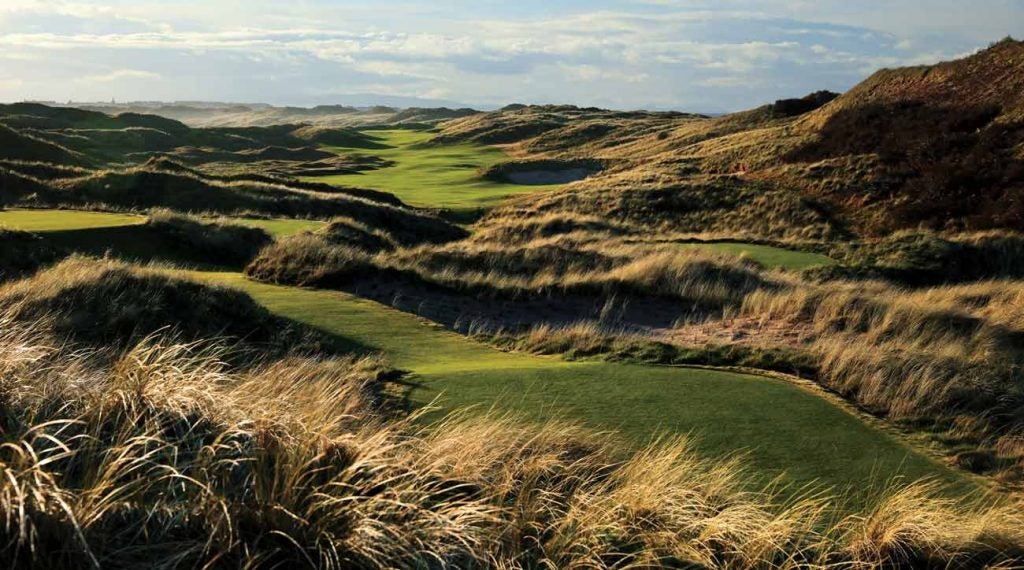
My gosh, it was worth the wait. County Down is breathtaking from start to finish. Even in biblical rain and wind. Each hole is tucked so snugly between dunes that it’s impossible to notice neighboring holes. But you do notice the towering, nearby Mountains of Mourne. You notice the grand spire of the Slieve Donard piercing the low-hanging clouds. You notice the scattered yellow gorse bushes that illuminate the dark dunes. At the front entrance of the Slieve Donard, you also notice a curious building nearby. It’s a tired, old clubhouse bearing the name Mourne Golf Club. But there is no course. No, it’s a society offering perhaps the world’s greatest golf membership. Mourne GC was founded in 1946 to allow humble Newcastle locals access to Royal County Down. Mourne affords its 350 members (300 men, 50 boys) playing rights to County Down’s Championship and Annesley links for 800 Pound sterling (about $990) a year. Along with Royal County Down Ladies Club, “the Mourners” can play County Down every day except Saturday.
Mourne was precisely how Rory McIlroy described Northern Irish golf when this writer asked him to sum it up at a PGA Tour event this past summer. “The casualness is what I love,” McIlroy said. “There’s no big fuss made about playing these great courses. But here in the U.S., and some other places, it’s a bit of a … production.”
What McIlroy omitted was how quirky Northern Irish golf can be. Ardglass, a clifftop course in Downpatrick on the east coast, is weird and wonderful. Here, golfers stroll past the 15th-century Margaret’s Castle to the oldest golf clubhouse in the world. The clubhouse was built in 1405, and entrances to its bathrooms are literally five feet tall. Their ceilings come with warning signs to duck.
Ardglass’s first two holes may be the best opening duo in Northern Ireland. The par-4 first has a memorable tee shot across water, followed by a dune-tucked green. The par-3 second features a sea carry with a green perched on the cliff ’s edge. After a memorable round, our group toasted Ardglass with Guinness on the clubhouse rooftop, which, marvelously, looks across the Irish Sea at the Isle of Man.
But it’s time to head north to our golf finale at majestic Royal Portrush. And I wish I could say that playing the Open Championship host was the most interesting thing about Portrush. But it was not. It was our caddie, who had an arsenal of sensational stories. One involved a group of Irish lads who were once on a bachelor party across the North Atlantic Ocean in Scotland. They had embarked on a whiskey distillery tour the night before their 2:00 p.m. tee time at Portrush. Their ingenious plan was to rent a Zodiac rubber boat to motor across the channel to Portrush, only they hit a rock and capsized. The lads had to be rescued by helicopter, but miraculously made their tee time.
It was a tall tale. But our caddie delivered it brilliantly and it was easy to see why he was regularly an extra on the Game of Thrones set.
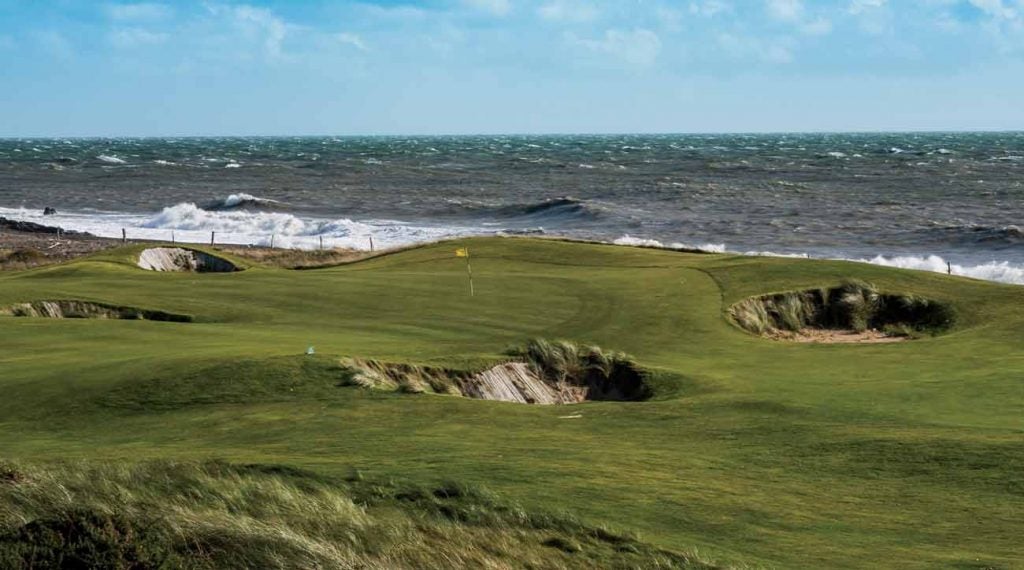
Sporting a giant’s hangover, the North Americans headed home while the Australians traveled to Dublin. On Friday, we played the 126-year-old Portmarnock Golf Club. We marveled at the architectural feat of crafting such a thrilling layout from a flat piece of land beside the Irish Sea.
On Saturday, the golf took a deserved day off. But the alcohol did not. We were scheduled to tour Dublin’s whiskey distilleries, which have kick-started a renaissance of sorts. With Irish whiskey plummeting to a two percent global market share, craft distilleries such as Teeling are leading a comeback. Founded in 2015, Teeling last year unveiled the Revival — the first batch of whiskey distilled, aged and bottled in Dublin in more than 40 years. Across town, fellow newcomer Pearse Lyons created headlines in 2017 when they converted the 12th-century St. James Church into a distillery. Their copper pot stills sit directly in front of stained-glass windows.
But all good golf trips must come to an end. Thankfully, this dream jaunt concluded at the European Club. I was grateful Ireland had saved its most colorful character, Ruddy, to perform last. His sobriety was humbling, but he was not judgmental. “Drinking is a part of golf in this country,” said Ruddy, as if to entice me back.
***
The Yanks Are Coming!
Next year marks the 25th anniversary of the Shamrock Classic, an American football game first played in Dublin between Notre Dame and the U.S. Naval Academy. (The Fighting Irish won that one, 54–27, to the delight of the locals.) A sellout crowd of about 51,000 welcomes the same two teams to Aviva Stadium this coming August for what is now the Aer Lingus Classic. Golfing football fans might want to check out the “Golf & Game” tour packages offered by Celtic Golf, which not only include VIP tickets, but rounds on courses like Ballybunion, Old Head and Royal Portrush. That’s a rotation worth fighting for.
To receive GOLF’s all-new newsletters, subscribe for free here.
ADVERTISEMENT





